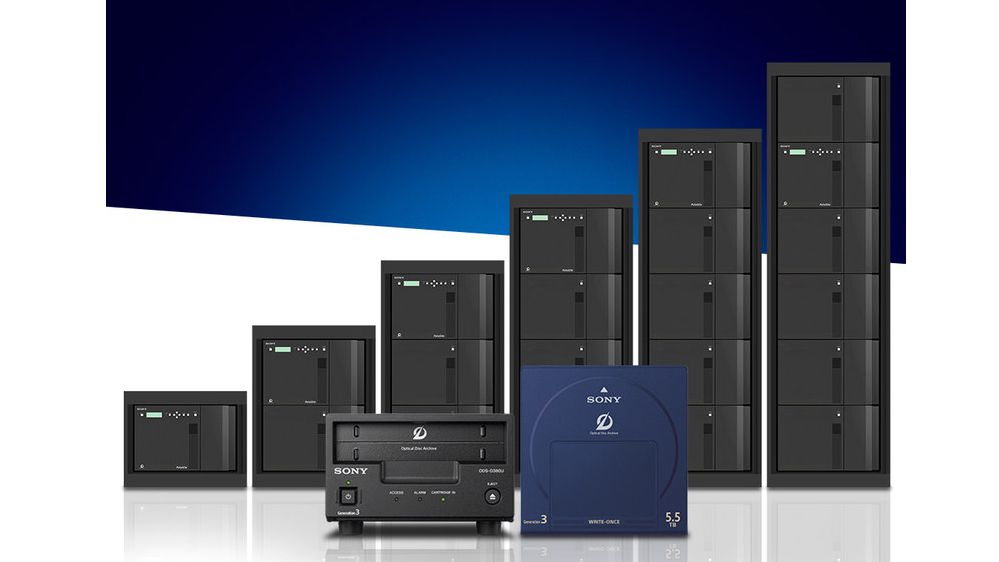Here’s what Sony’s million gigabyte storage cabinet looks like
Optical Data Storage is alive and kicking

Sony’s latest optical data storage archiving solution is finally here and those requiring access to secure, read-only data (e.g. for corporate IT, state and local government, healthcare, education and surveillance use cases) will want to take note.
The Gen3 PetaSite Optical Disc Archive technology offers nearly 3PB of what Sony calls “immutable” optical storage, in an industry standard 42U rack - that’s three thousand Terabytes in a unit about the size of a two-door wardrobe.
These usually contain a Master Unit (which is the drive itself) and up to 535 5.5TB cartridges.
- Here's our list of the best external hard disk drives around
- Check out our list of the best portable storage on the market
- We've built a list of the best external storage for Macs available
Each unit is 7U high and includes a 3-slot import/export station to load and unload media automatically. The host interface is an 8Gbps Fibre Channel, while the maintenance interface relies on good old GbE.
One might argue you only need about 190 16TB hard disk drives to surpass the capacity of Sony’s PetaSite solution, but they are likely to have a much lower archival shelf life (Sony’s solution offers up to 100 years). Plus, neither guaranteed WORM nor EMP resistance are an option with hard drives and SSDs.
Sony’s Archival Disc is a hexa-layer, dual-sided media that is derived from the company’s work on Bluray media, and can be read at 3Gbps with an average write rate of 1.5Gbps.
Compared to tape, it provides fast random access to data files, although tape is probably a much cheaper alternative, especially as LTO-9 is now expected to land before 2021.
Sign up to the TechRadar Pro newsletter to get all the top news, opinion, features and guidance your business needs to succeed!
- Here's our choice of the best wireless SSDs of 2020

Désiré has been musing and writing about technology during a career spanning four decades. He dabbled in website builders and web hosting when DHTML and frames were in vogue and started narrating about the impact of technology on society just before the start of the Y2K hysteria at the turn of the last millennium.